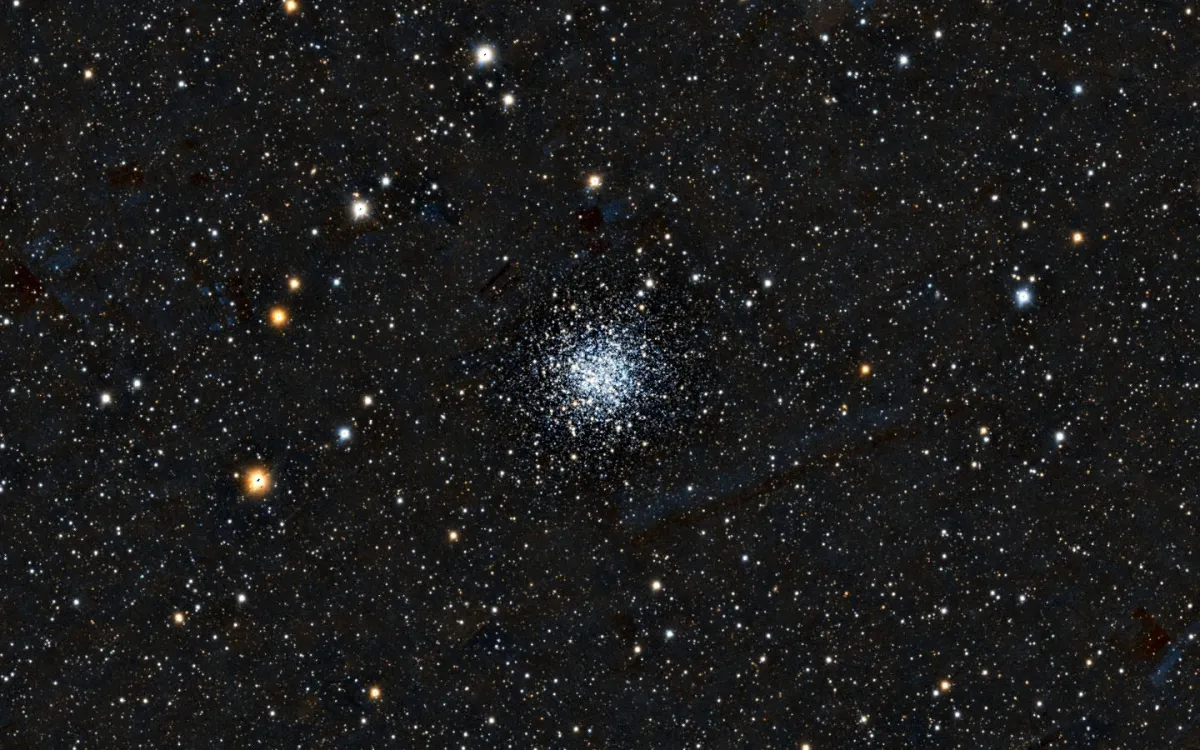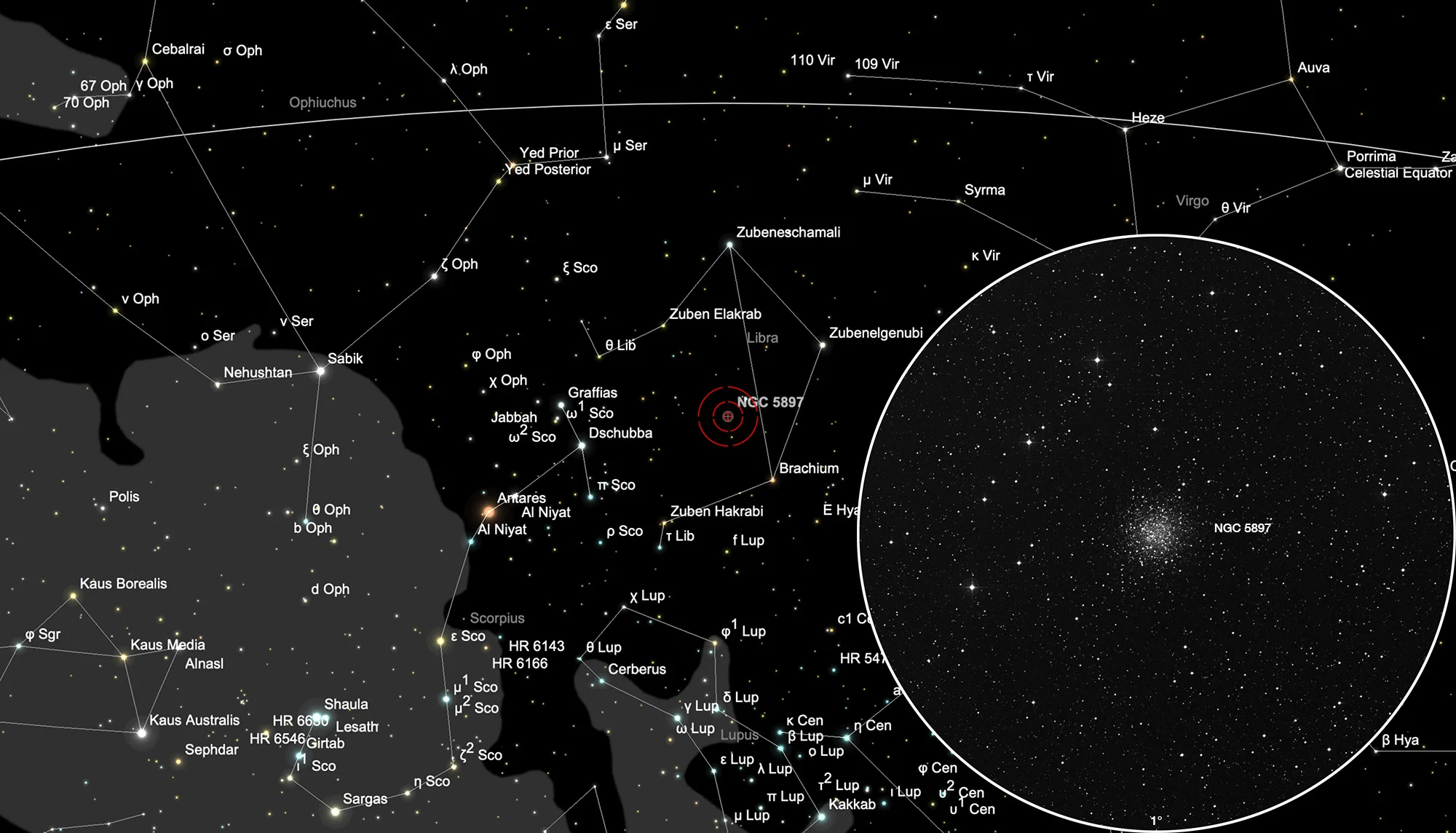Globular Cluster NGC 5897

History
This globular cluster was discovered on 10 March 1785 by the famous German-British astronomer William Herschel using his selfmade reflecting telescope of 20 foot focal length (aperture 18.7 inch) in Slough near Windsor in Great Britain. He classified it as cataloged it as VI 19 (class VI = very compressed and rich clusters of stars) and noted: «A beautiful larg cluster of the most minute and most compressed stars of different sizes. 6 or 7' diameter, irregular round, faint, red colour». [463] His son John cataloged it as h 3596, GC 4075 and Dreyer added it in 1888 as NGC 5897.
Physical Properties
NGC 5897 is a metal-poor globular cluster in the Galactic halo. In astronomy everything heavier than Helium is a «metal». It is located at a moderate distance from the Sun 12.5 kpc and 7 kpc away from the galactic centre. NGC 5897 is known to harbor several variable stars, mainly of type RR Lyrae. [527]
| Designation | NGC 5897 |
| Type | GCL (XI) |
| Right Ascension (J2000.0) | 15h 17m 24.5s |
| Declination (J2000.0) | -21° 00' 35" |
| Diameter | 11 arcmin |
| Visual magnitude | 8.4 mag |
| Metric Distance | 12.500 kpc |
| Dreyer Description | globular, pF, L, viR, vgbM, rrr |
| Identification, Remarks | WH VI 19; h 3596; GC 4075; GCL 33; ESO 582-SC2 |
Finder Chart
The globular cluster NGC 5897 is located in constellation Libra. The best time to observe it is from January to October.
Visual Observation
400 mm Aperture: In the 21 mm ethos, NGC 5897 appears merely as a large, faint, diffuse spot with a few individual stars. In the 13 mm Ethos, the individual stars are more clearly recognisable. The entire globular cluster, however, remains just a grey veil. — 400 mm f/4.5 Taurus Dobsonian, Ahornalp, SQM 21.2, 30. 5. 2025, Bernd Nies
